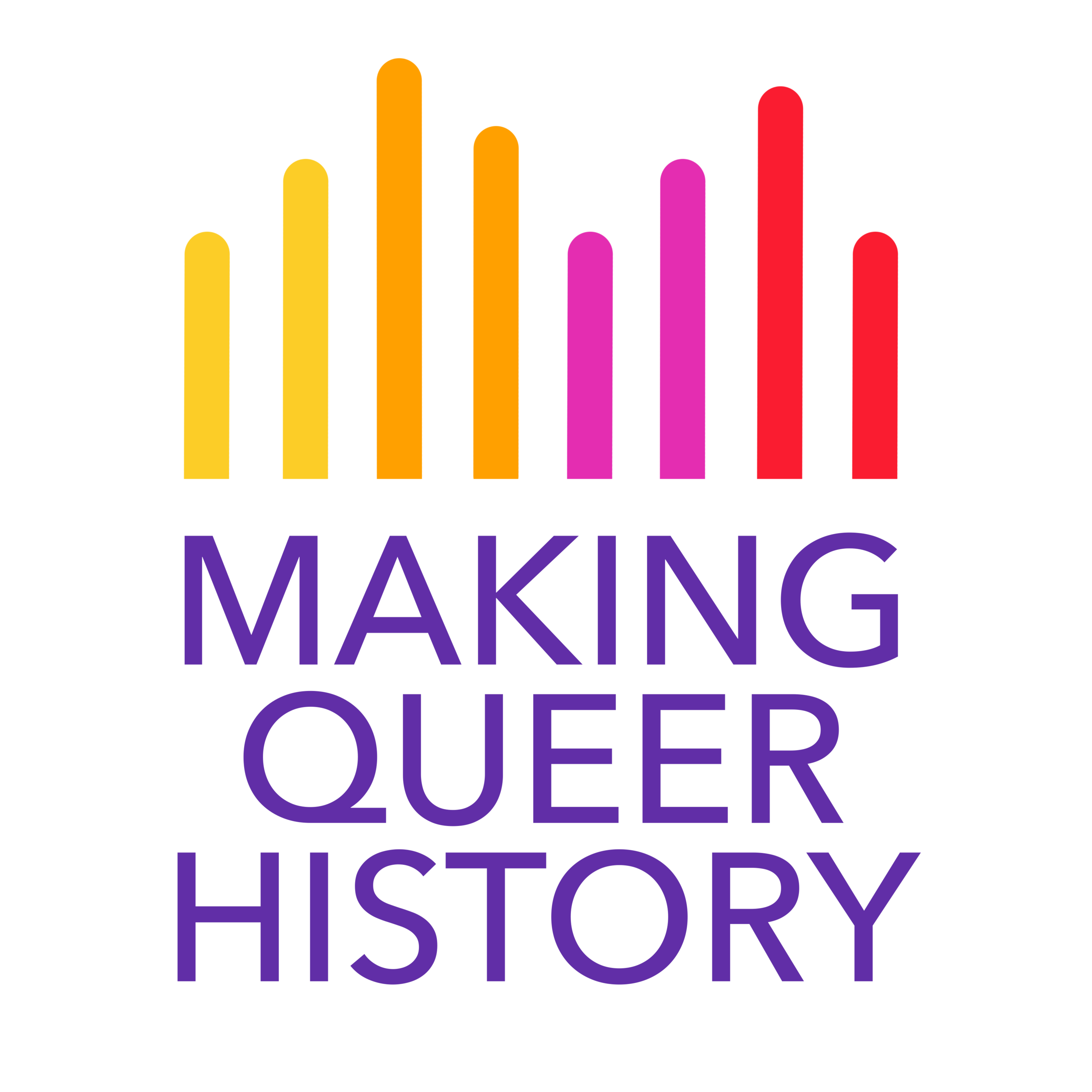A black and white photo of Ljuba Prenner wearing a white button up suit and a tie.
"Jaz sem dr. Ljuba Prenner, ne moški ne ženska"
("I am Dr. Ljuba Prenner, not a man nor a woman")
— Ljuba Prenner
Ljuba Prenner, a Slovenian lawyer and author, was born in 1906 and was assigned female status at birth, though there were clear indications of gender variance even from a young age. In his adulthood, he became an author and a lawyer and also entered a lifelong relationship with a woman, Štefka Vrhnjak.
The first descriptor, then, and that which is most often applied to him and easy to find evidence of, is lesbian.
The next is transgender, specifically a transgender man. The proof is easy to find in his semi-autobiographical novels written from a male perspective, his masculine style, his gravitation to men's social groups, and his use of masculine language in reference to himself. A school friend later called him "my little boy" in her letters.
While nonbinary people have existed throughout all of history, and the binary idea of gender is by no means a universal one, "nonbinary" as a label is relatively new and not as well known as some other terms. It is not necessarily an indication of anything other than lack of access that Prenner never used the term for himself. Within the constraints of available language and understanding, he did discuss and identify with the idea of being removed from the concept of the male/female binary. One very clear example of this is a simple quote:
"I am Dr. Ljuba Prenner, not a man nor a woman"
Looking at his own words, the answer seems obvious, but there is still nuance to be recognized. Primarily, the understanding that throughout history, same-gender attraction often came with the idea that you were an entirely separate gender. Pioneering European queer academics such as Magnus Hirschfeld and Karl Heinrichs Ulrichs both explored this concept, and it was not an uncommon idea in Europe while Prenner was alive. It is entirely possible that this was simply a part of Prenner's understanding of his own queerness.
Prenner spent his life peeling back the layers; he was an anti-fascist who was debarred from being a lawyer, kicked out of the writing society of Slovenia, and imprisoned for his rebellion against the fascist ideologies of the Communist Party of Slovenia. He spoke out against not only the organization itself but friends who encouraged him to join the organization: “I could not agree with the ideology, and even less with the methods”
He was an innovator, writing the first known Slovenian crime novel.
Ljuba Prenner died in 1977 at the age of 71, now largely understood as a lesbian, he used masculine identifiers, and almost certainly existed outside of the binary of male and female. There is infinite complexity within this, and more than enough information that can be seen as contradicting, but complexity is not a problem to be solved. It is a reality of being human that is vital to embrace.
One of the best quotes to understand the life of this Slovenian queer lawyer comes from Walt Whitman, a gay American poet who died eight years before Ljuba Prenner was born:
Do I contradict myself?
Very well then I contradict myself;
(I am large, I contain multitudes.)
[Disclaimer: some of the sources may contain triggering material]
Ciglar, Barbara Jarh. “Lezbična Ljubezen v Sodobnem Slovenskem Romanu (Lesbian Love in the Contemporary Slovene Novel).” Jezik in Slovstvo (Language and Literature), no. 5-6, 2011, pp. 39–56. https://www.jezikinslovstvo.com/pdf/JIS_2011_5-6.pdf#page=39
Petrović, Jelena. Women's Authorship in Interwar Yugoslavia: The Politics of Love and Struggle. Springer, 2018.
Polajnar, Gojmir. Don't Kill Anyone, I Love You. Translated by Aaron Gillies and Laird Hunt, Spuyten Duyvil, 2001.
Tratnik, Suzana. Lesbian Visibility in Slovenia. European Journal of Women's Studies, 2001.
Šelih, Alenka. Pozabljena polovica: portreti žensk 19. in 20. stoletja na Slovenskem (Forgetful Half: Portraits of 19th and 20th Century Women in Slovenia). Zalozba Tuma, 2007.
Štulhofer, Aleksandar, and Theo Sandfort. Sexuality and Gender in Postcommunist Eastern Europe and Russia. Routledge, 2008.
“Ljuba Prenner.” Prostor Slovenske Literarne Kulture (The Space of Slovenian Literary Culture), Institute for Slovenian Literature and Literary Sciences, pslk.zrc-sazu.si/sl/literarni-atlas-ljubljane/ljuba-prenner.
“Memorial Room of Dr. Ljuba Prenner.” Carinthia Provincial Museum, Slovenj Gradec, 2006. Exhibit. www.kpm.si/razstave/spominska-soba-dr-ljube-prenner/


